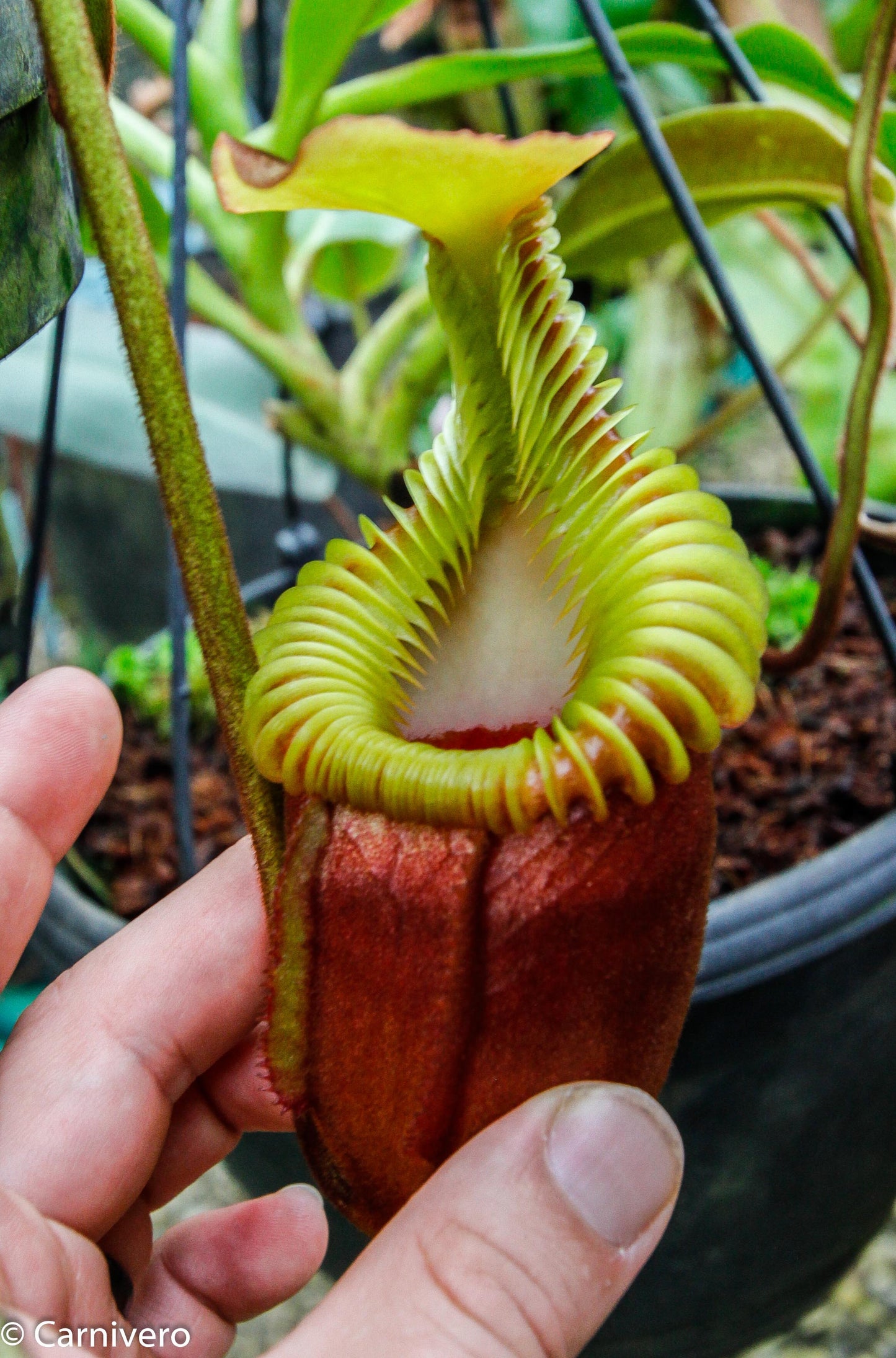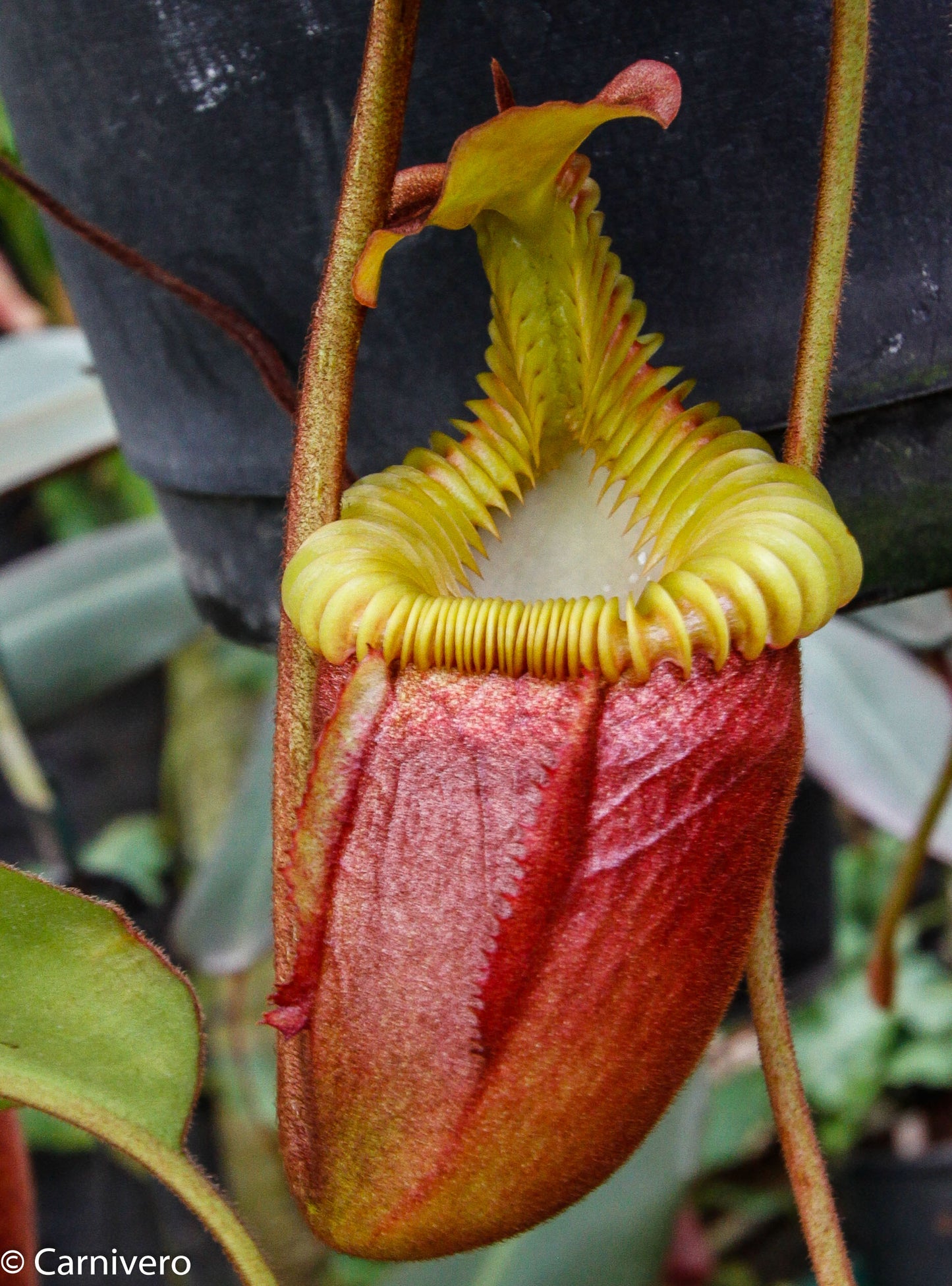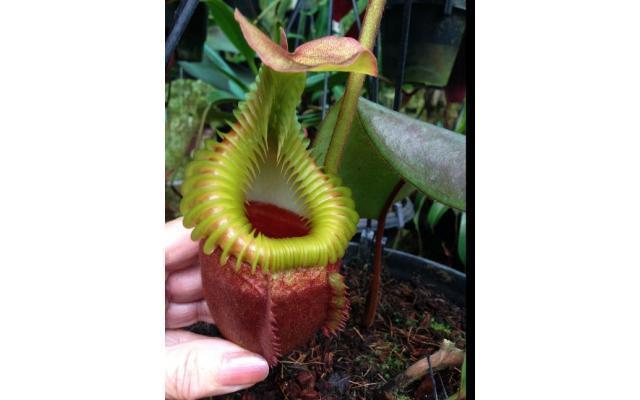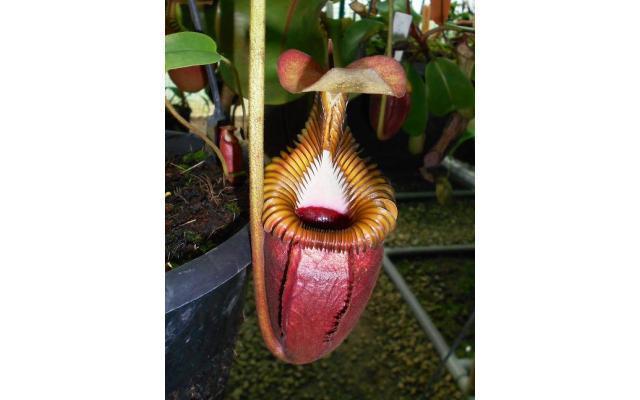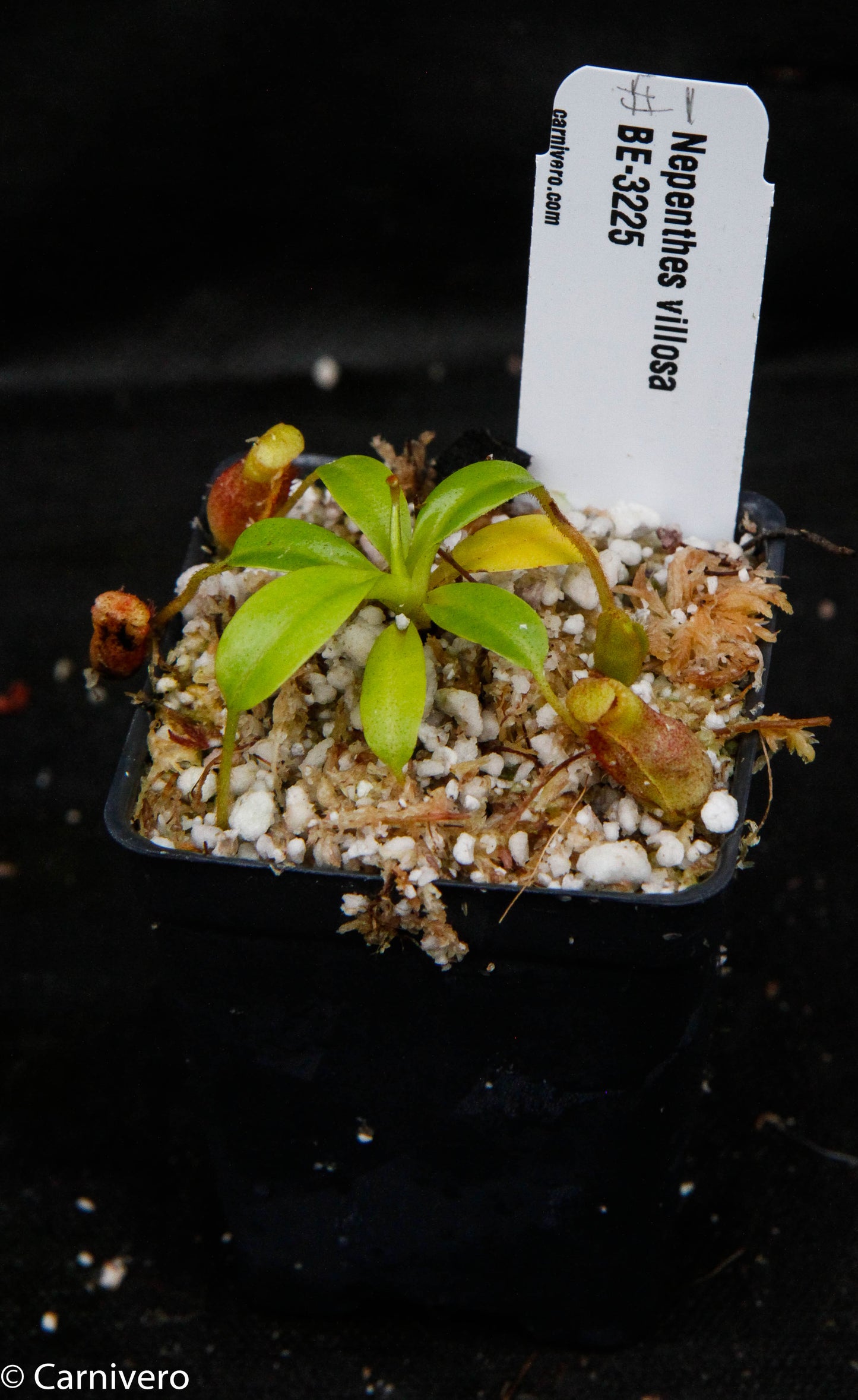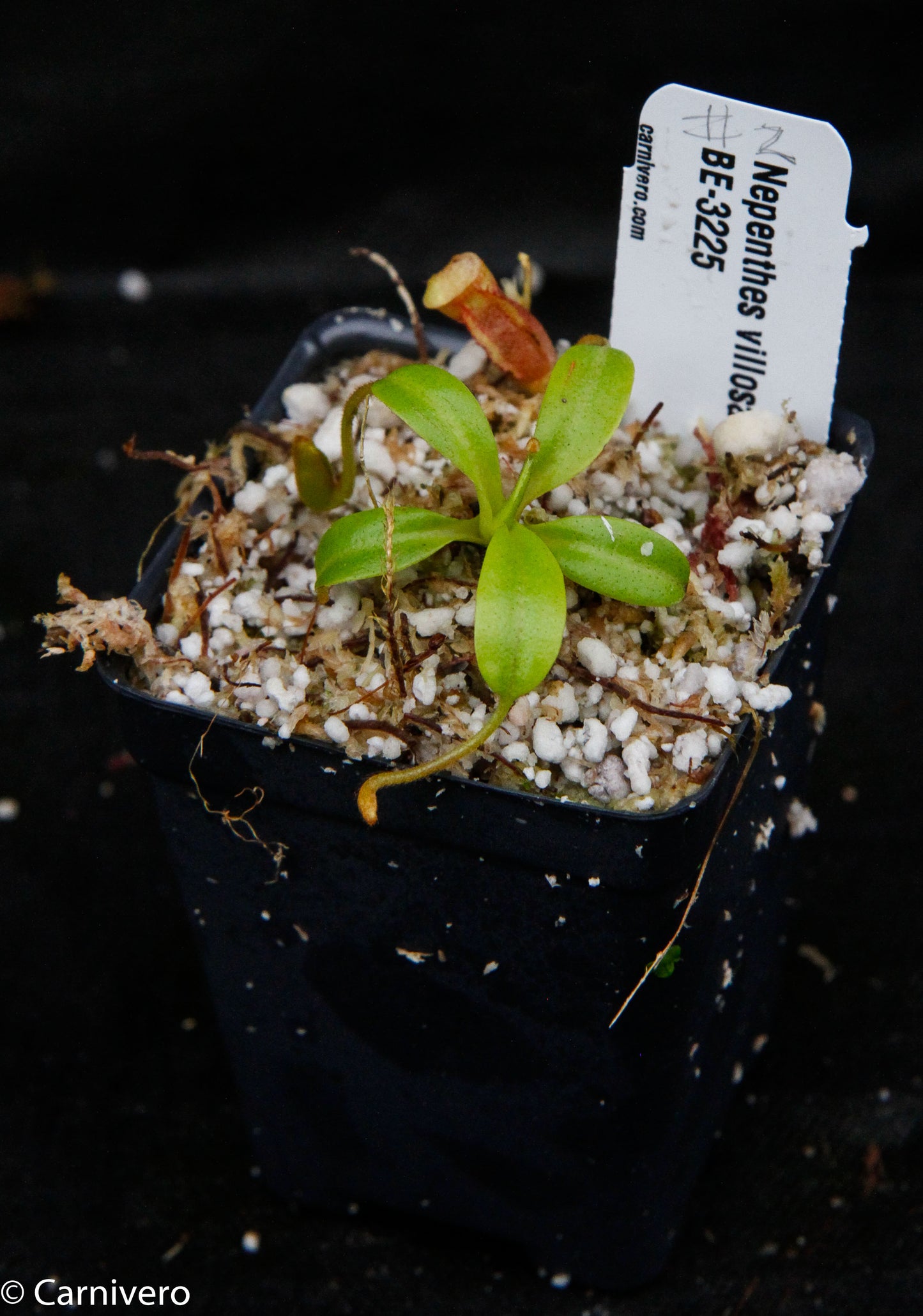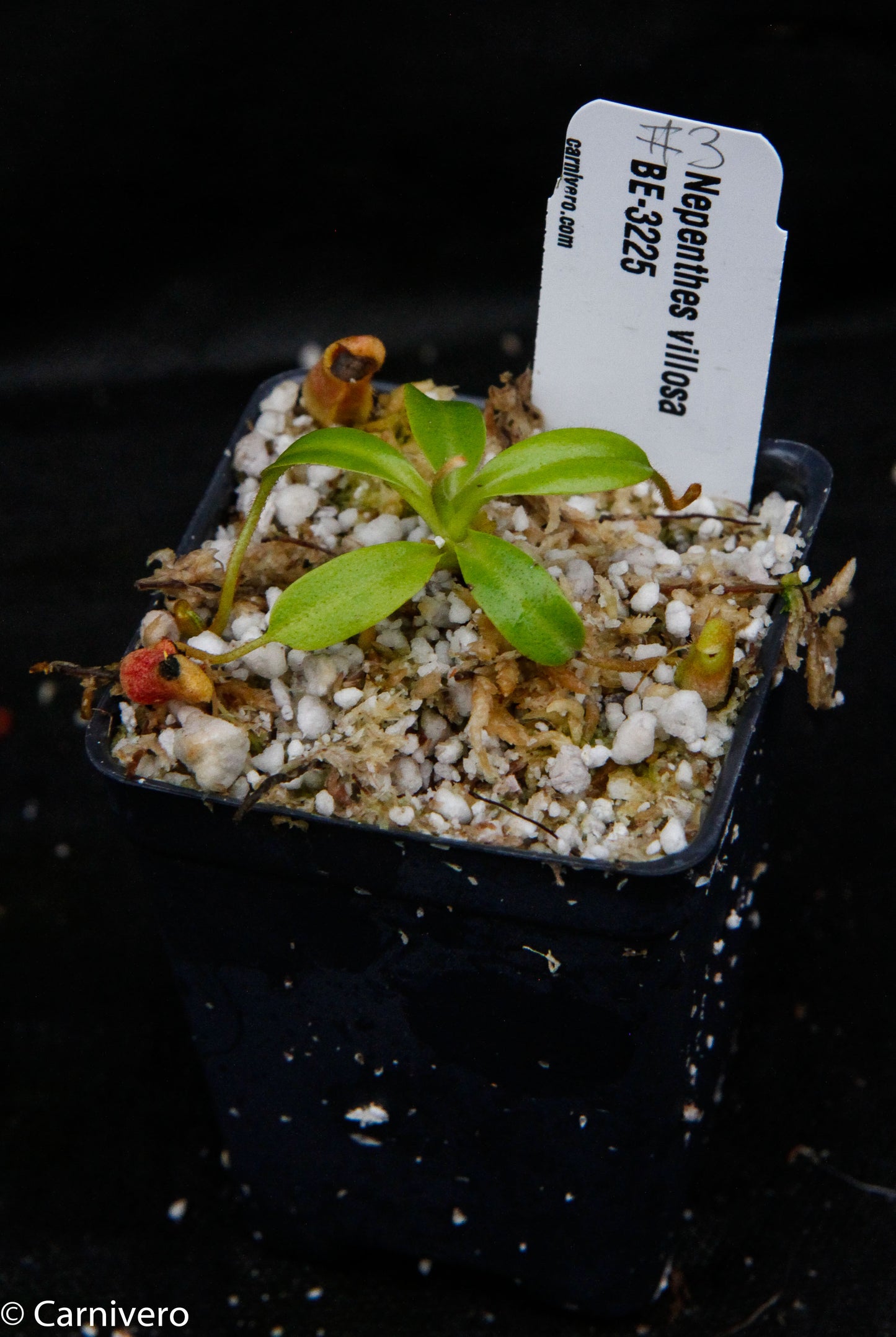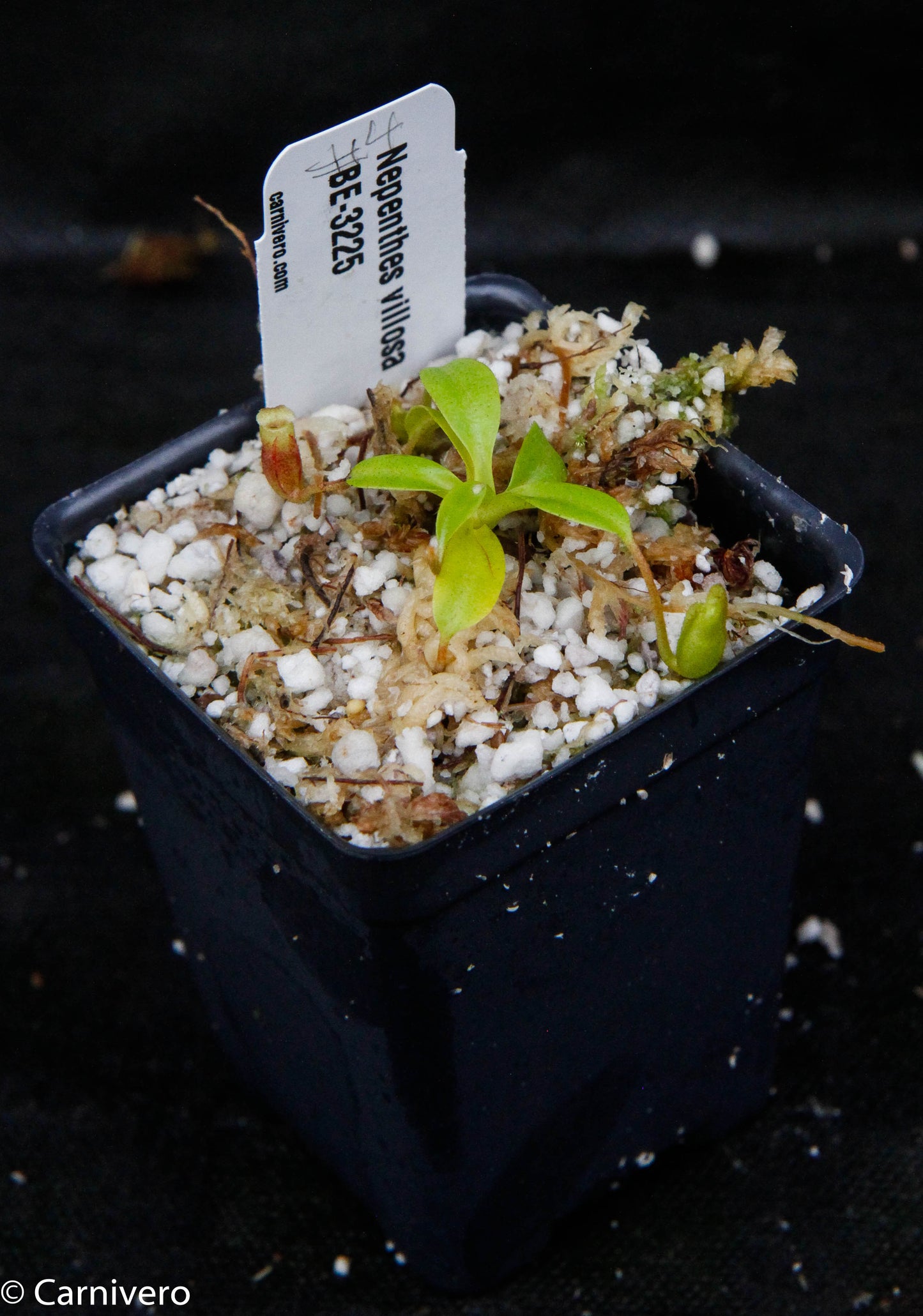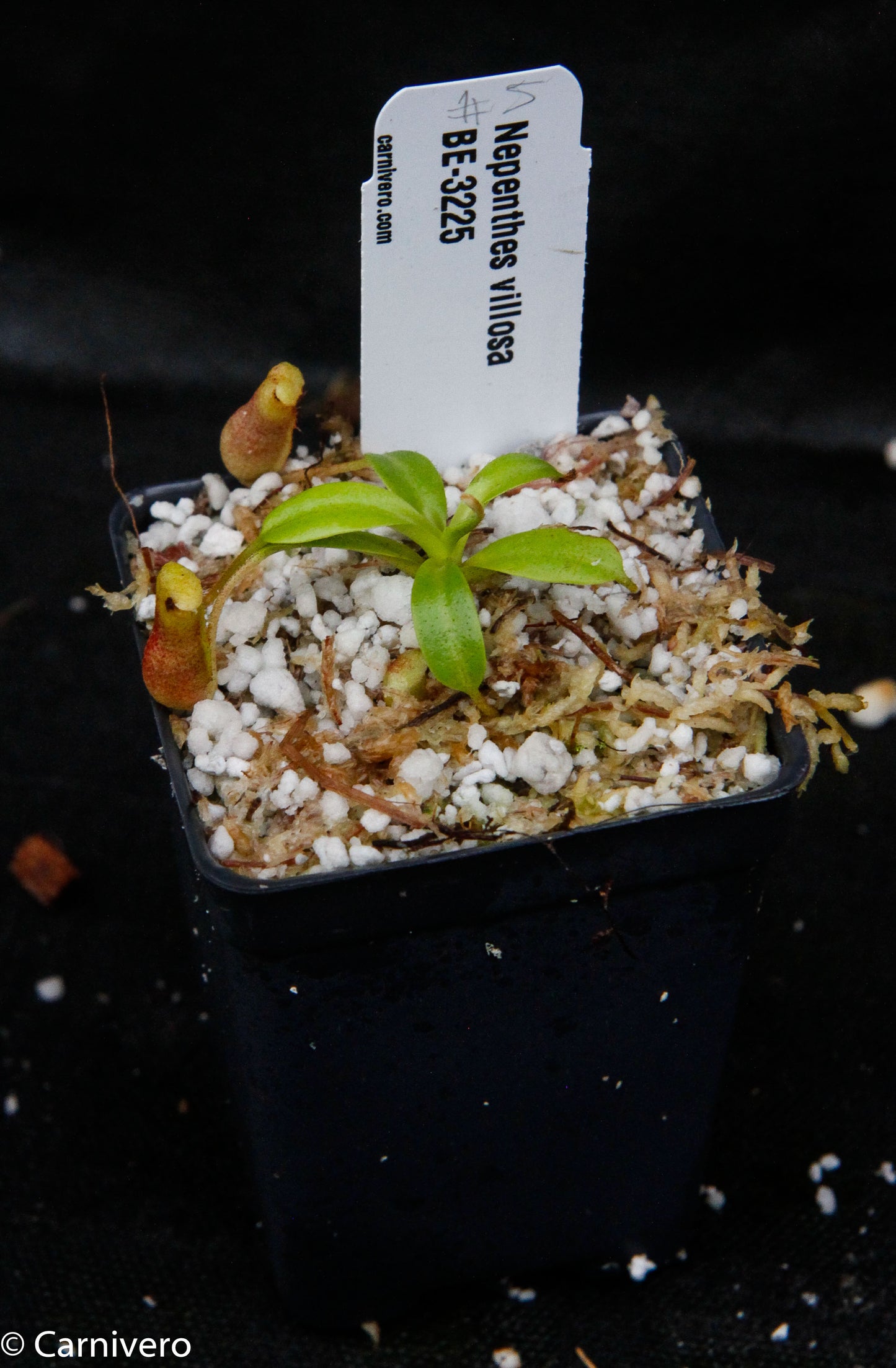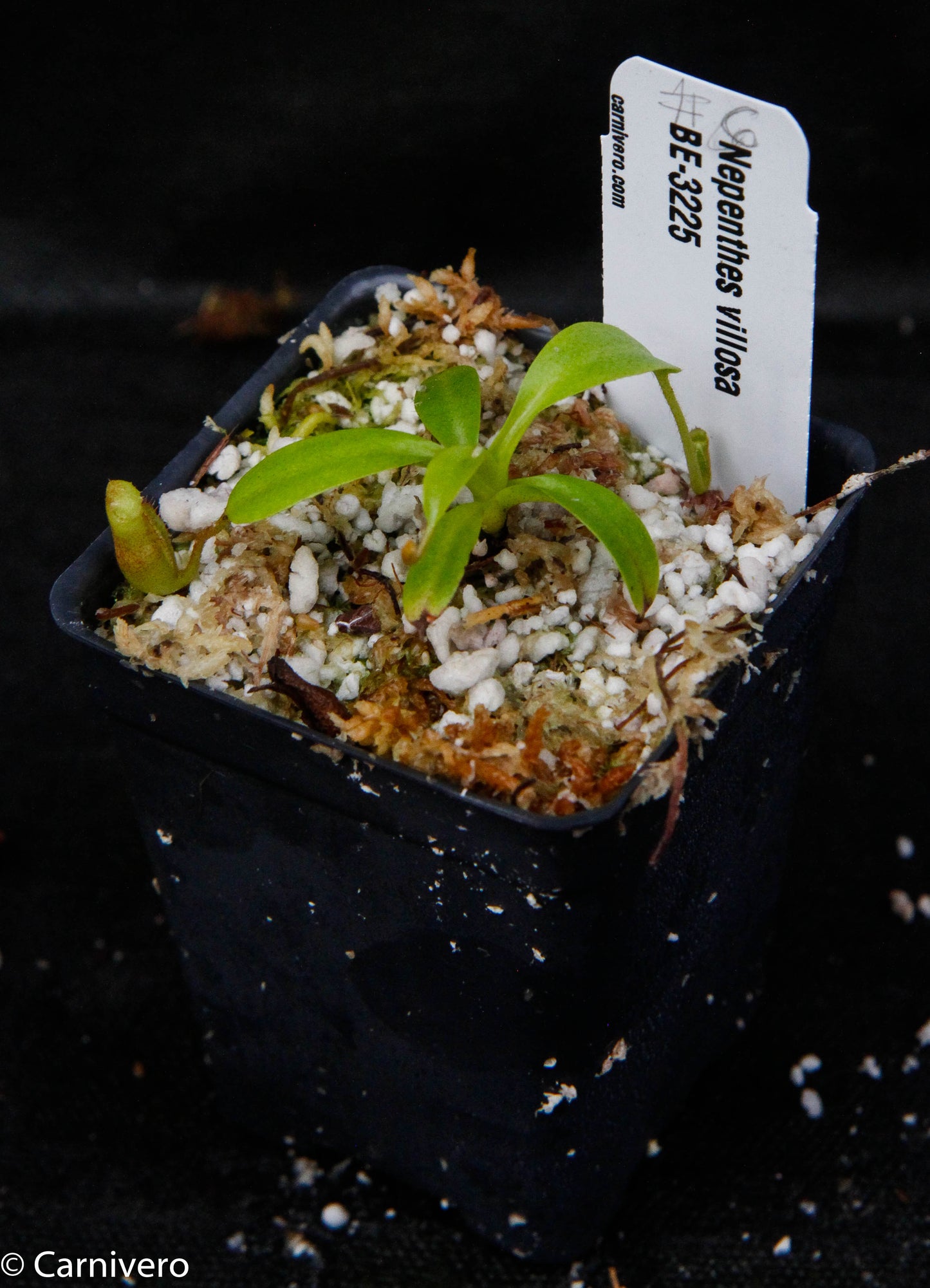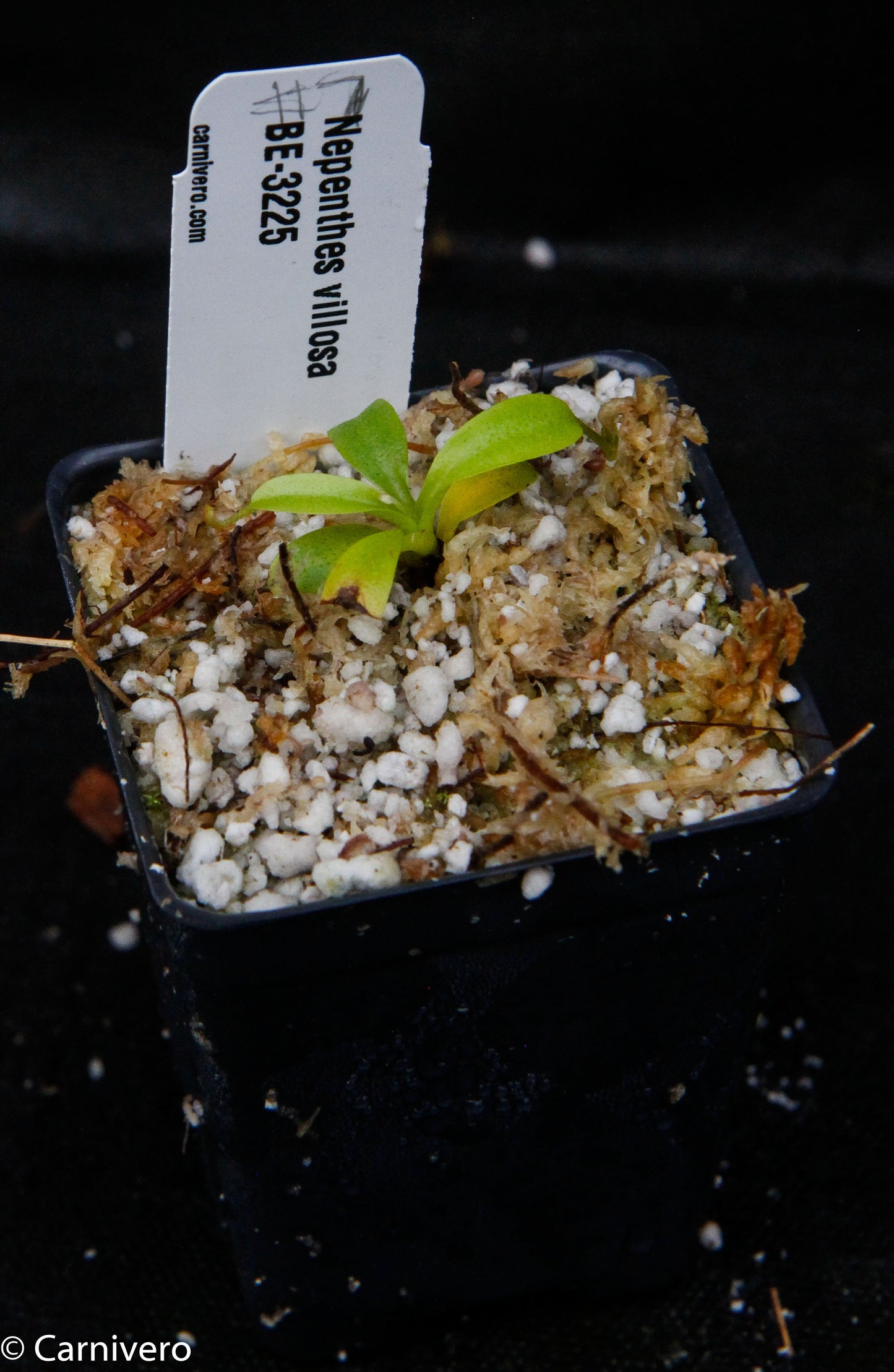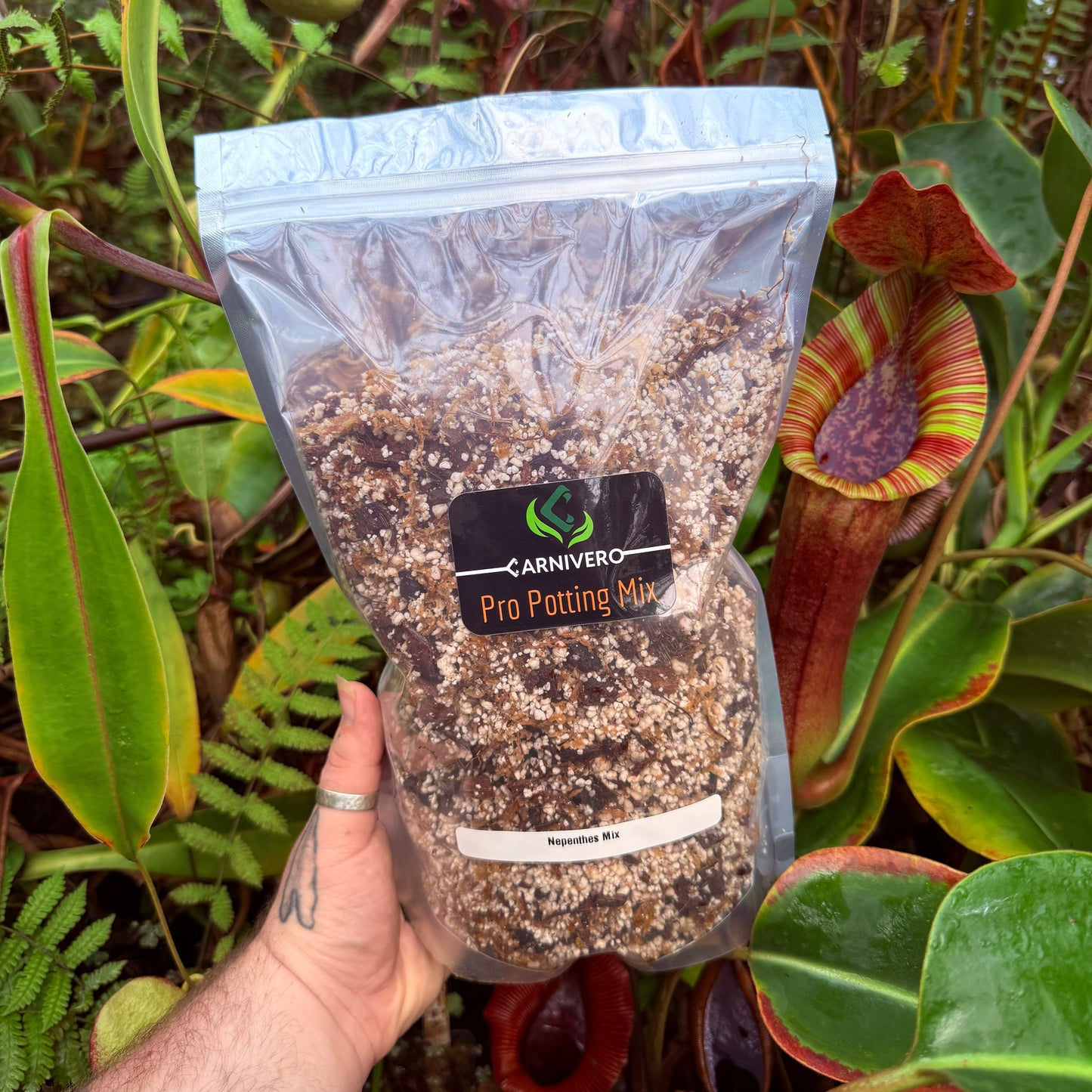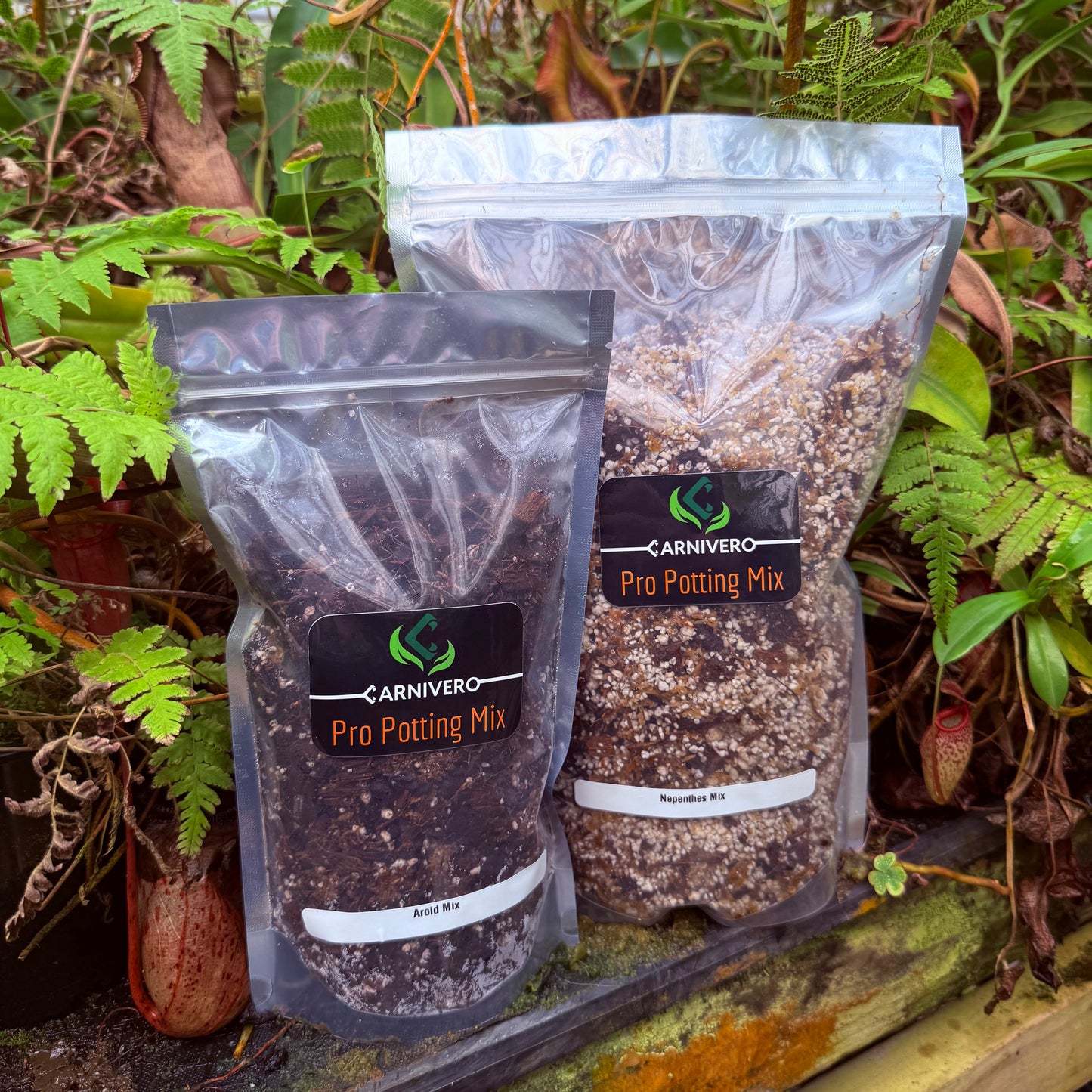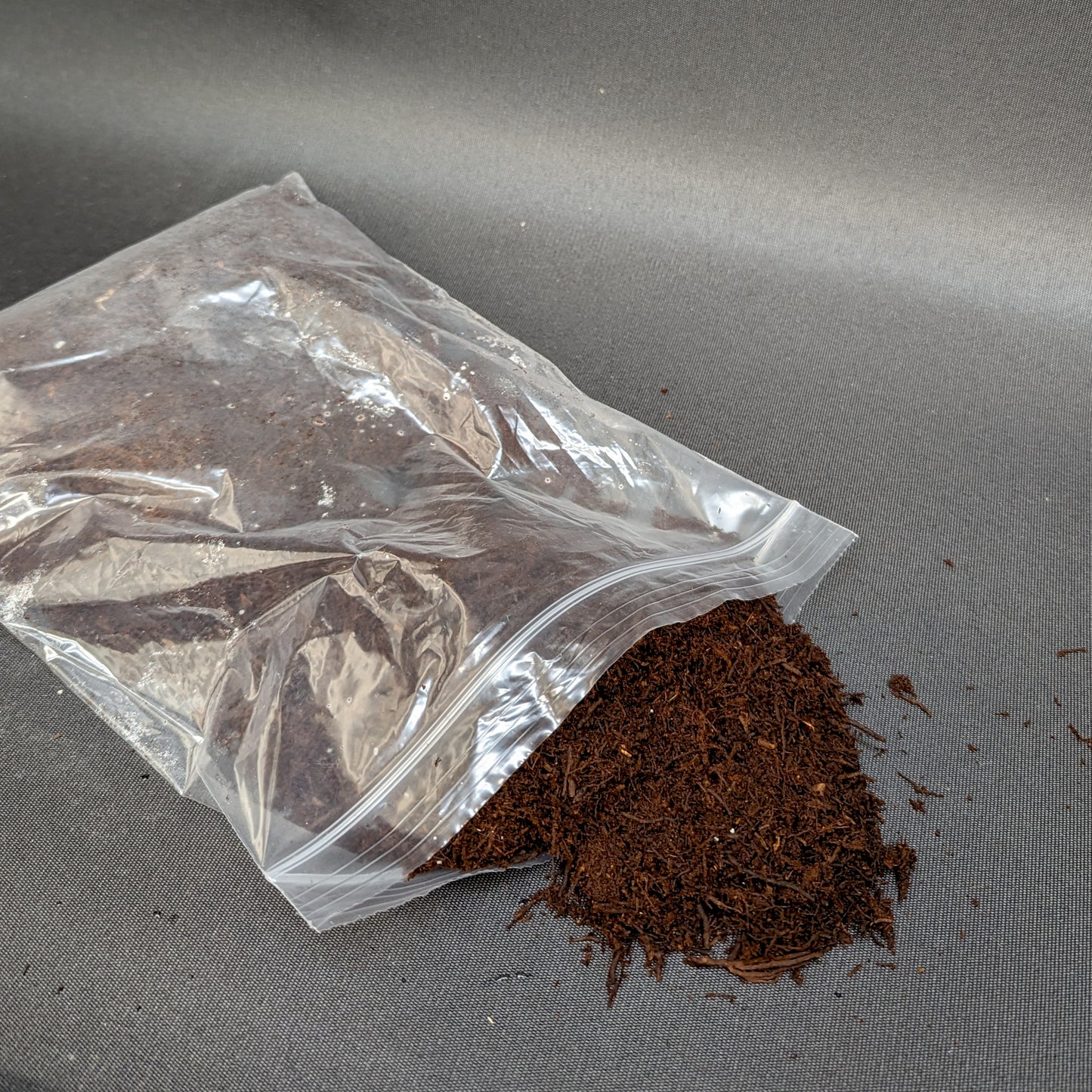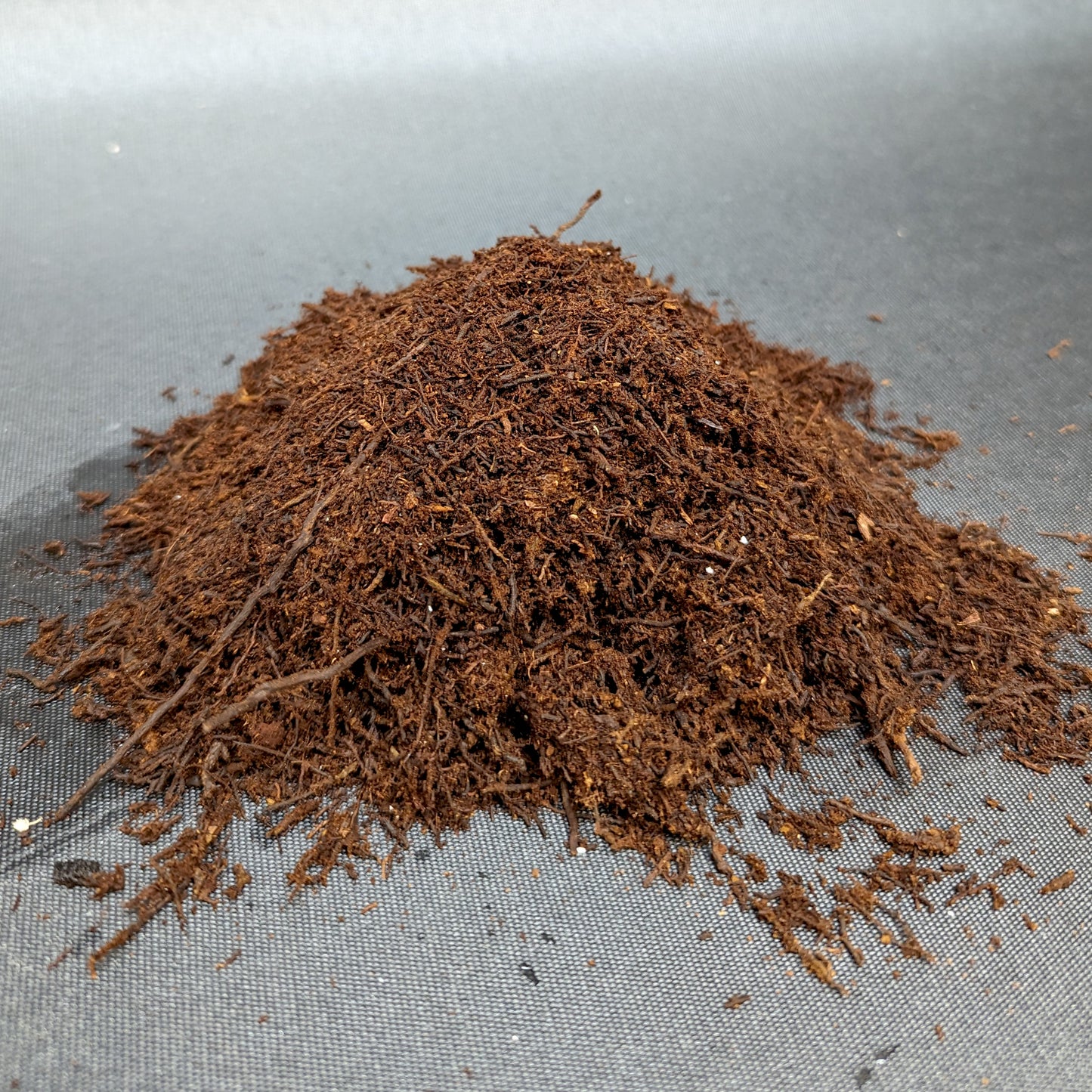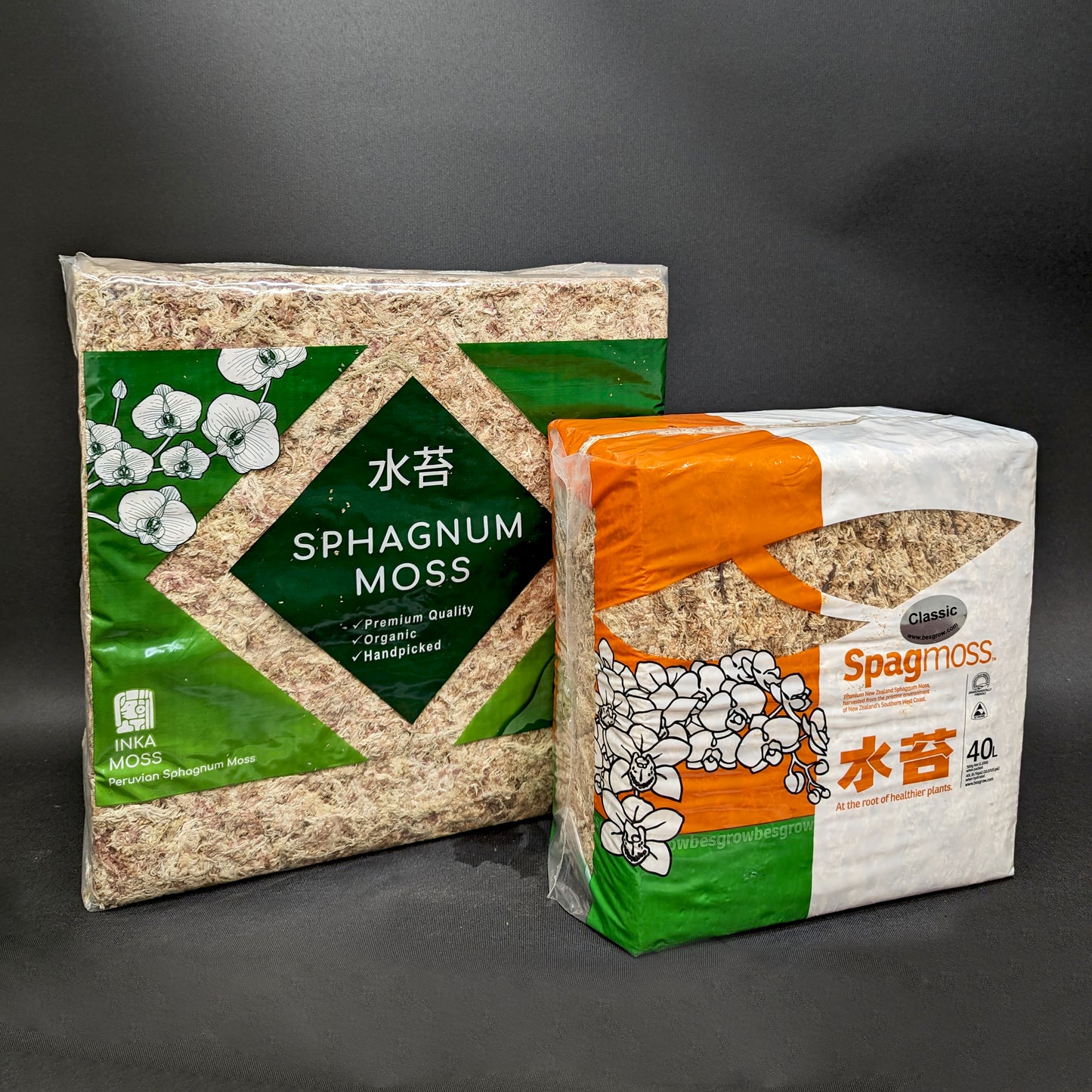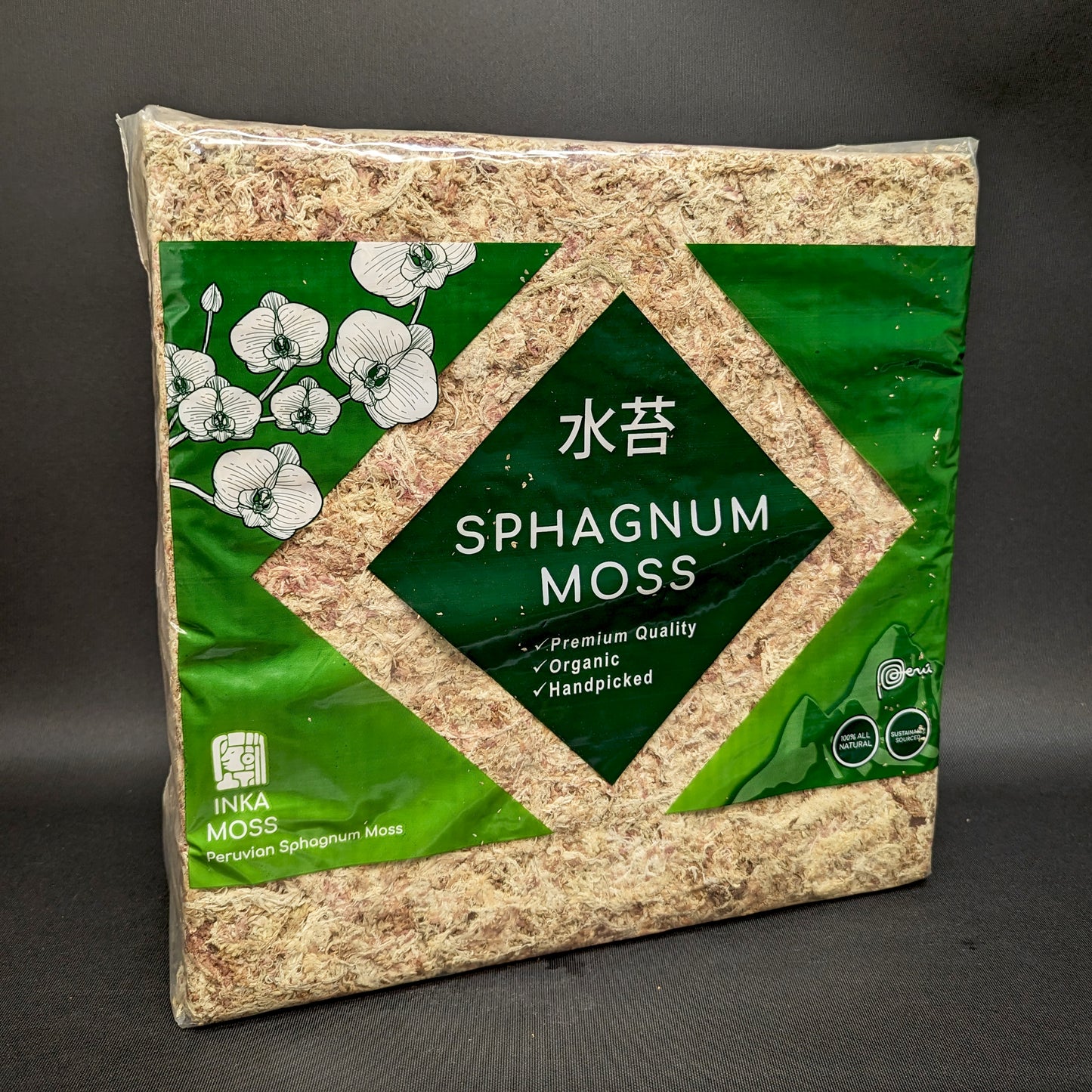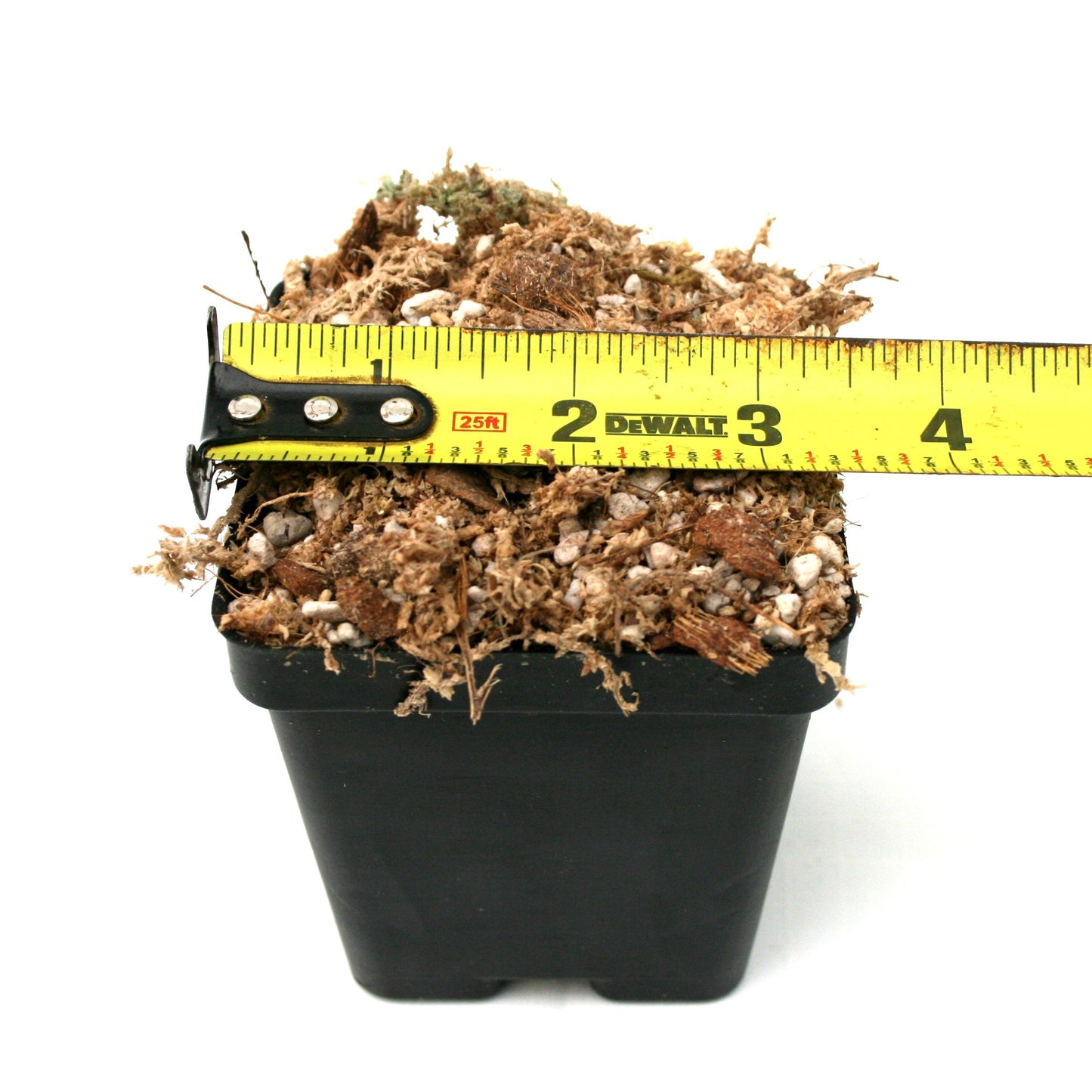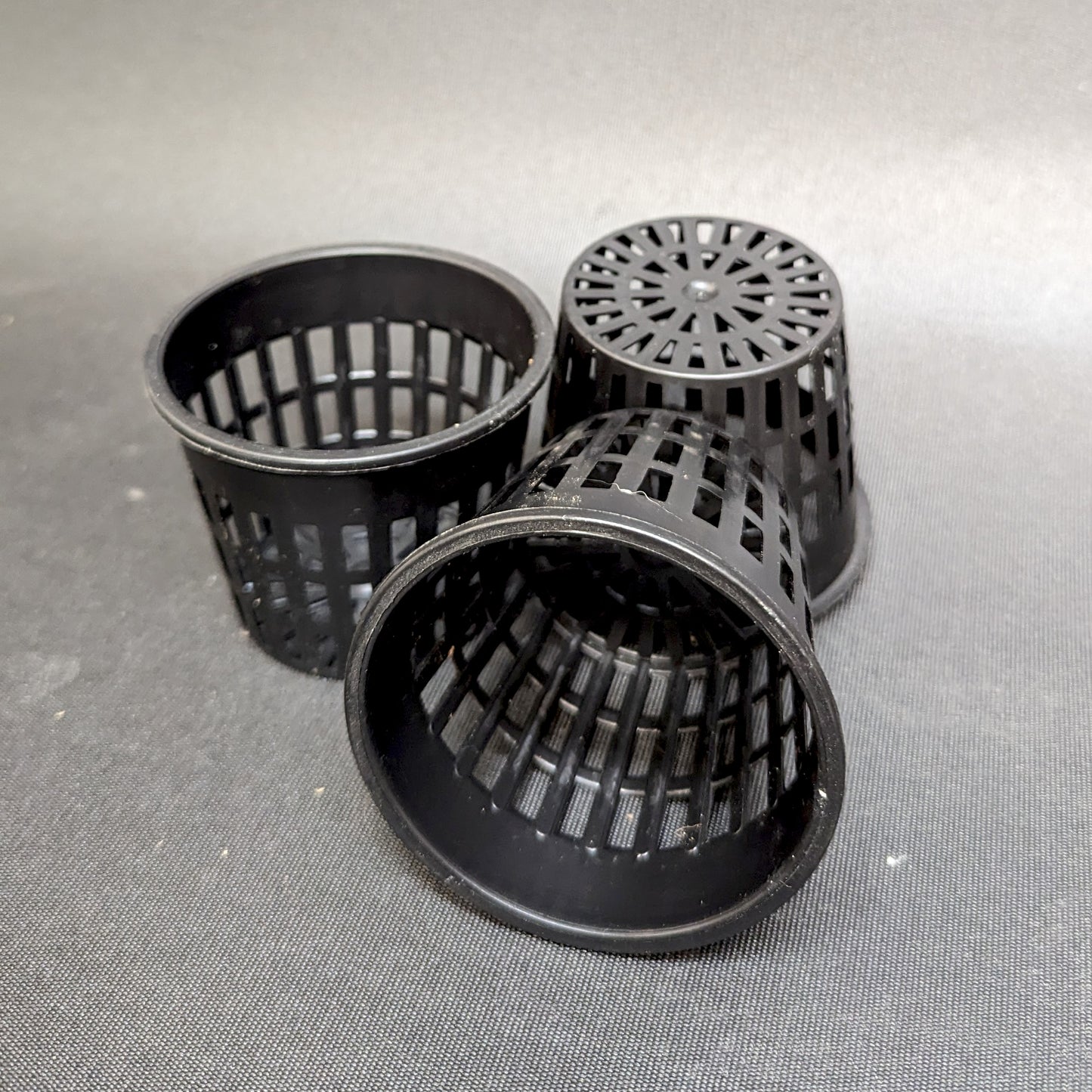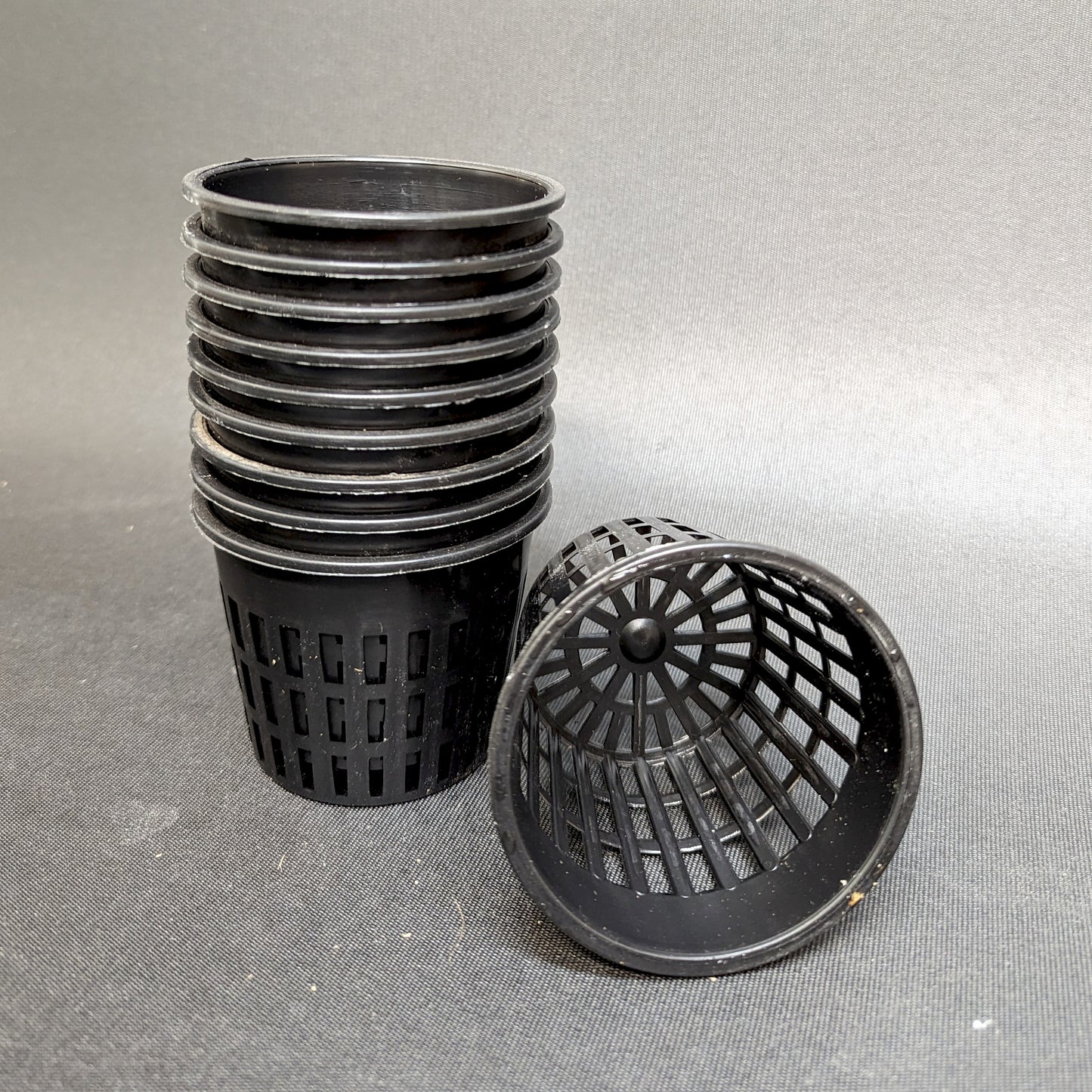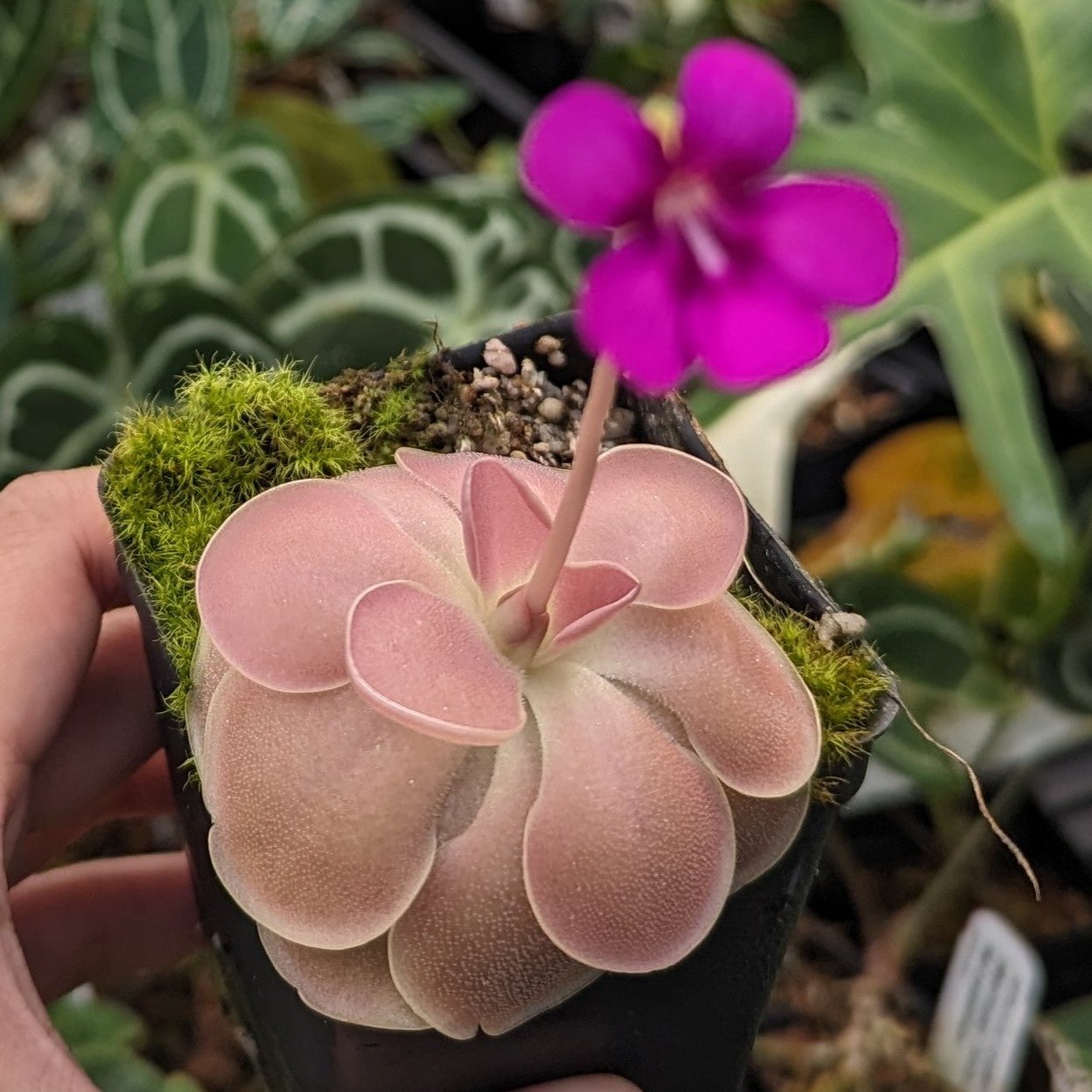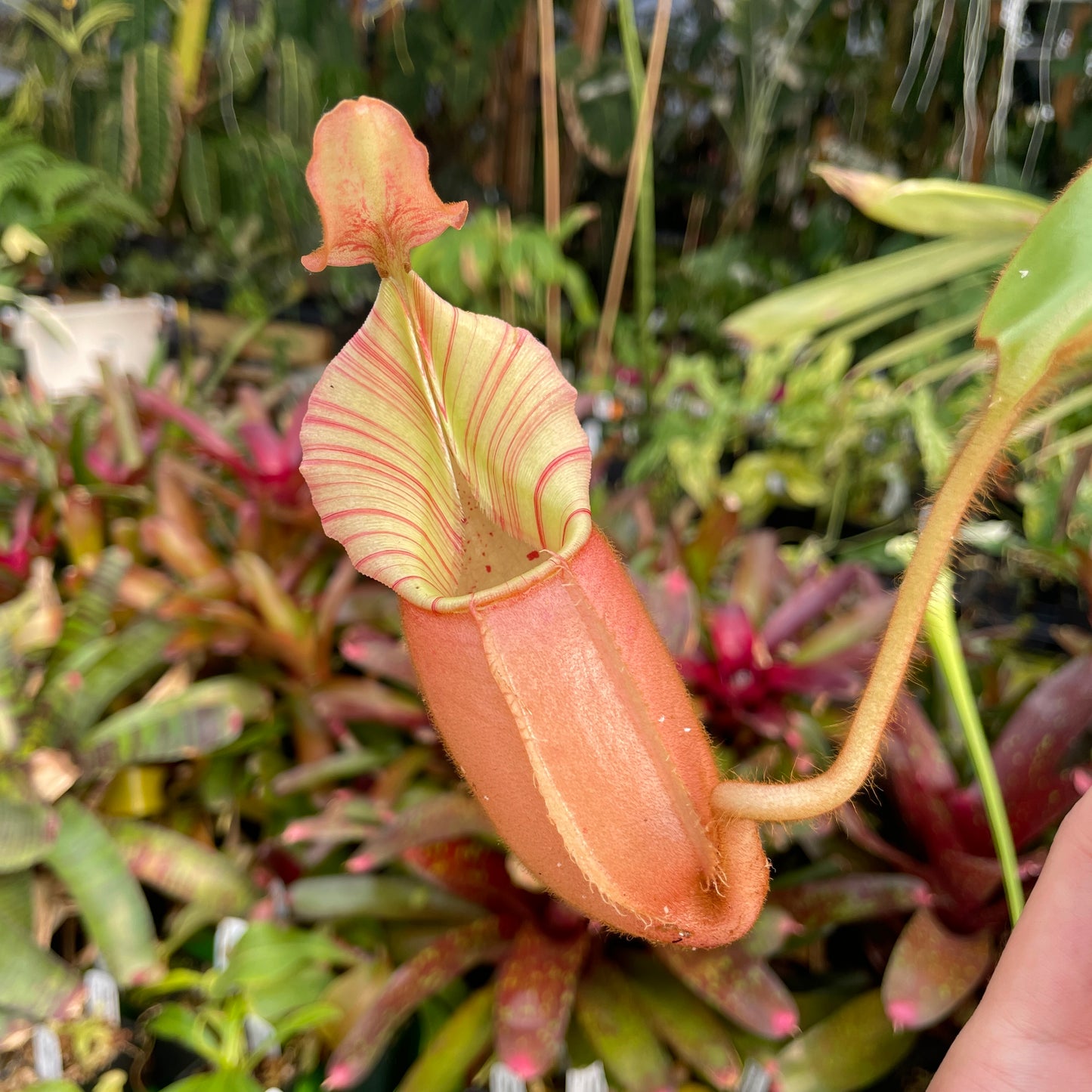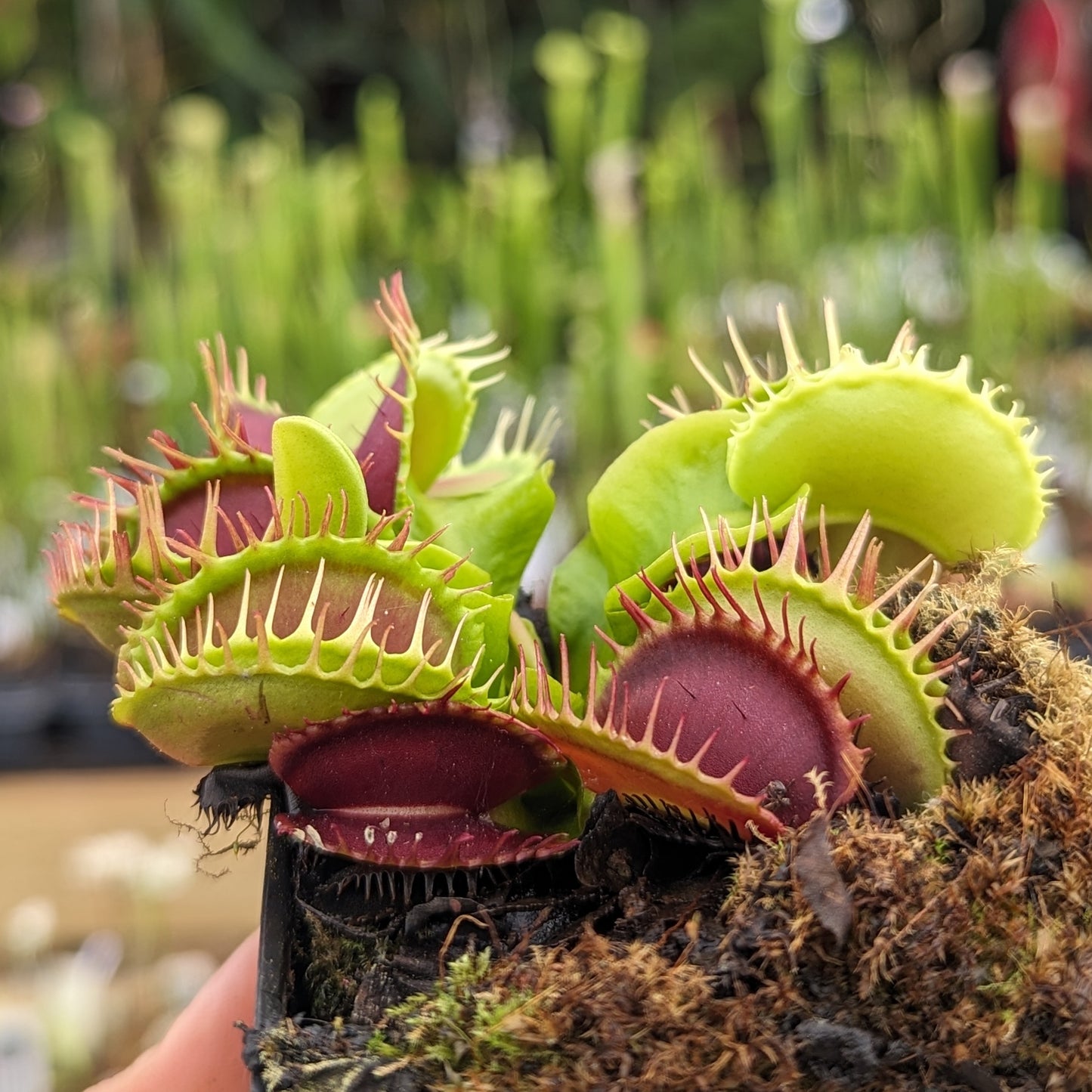Nepenthes villosa
Nepenthes villosa may be the most bizzarrely beautiful plant in the world. It grows only in the upper montane forests of a few ultramaffic regions in Kinabalu National Park where it produces large amounts of pitchers as it scrambles across the dwarfed brush just below the treeline.
It can be challenging to give Nepenthes villosa the conditions it wants to thrive but if you are able to do so then the species itself is not too finicky. Don't be misled by growers who try to convince you this plant can be grown as anything other than a strict highland plant. It can survive for a few months in non-ideal conditions; however, if a young plant starts going downhill it may be very difficult to get it to recover. Ideally, villosa wants nights in the low to mid 50's and days in the 70's with high humidity. Villosa is prone to crown rot especially when young so the leaves must be kept dry. The soil mix is not crucial (we use our typical Nepenthes mix) but make sure it has good drainage or the roots may suffer. In villosa's natural habitat (around 2600-3200 meters elevation) nights often can drop to just above freezing. Villosa prefers average light to slightly higher light than most Nepenthes. We've found that it produces its best pitchers in the spring (fingers crossed we get a flower soon since our biggest plant is now vining). Once established, villosa is a steady grower and will produce a few long lasting pitchers per year.
Borneo Exotics clone BE-3225 was originally supplied by the late Phil Mann of Southern Carnivores in Australia. It's a female plant and produces yellow teeth on a red pitcher body. We've found this clone to be more vigorous as a young plant than any others we've grown.
This pitcher plant is considered a Highland Tropical plant. Please see our Shipping and Guarantees policy for cold/hot weather shipping guidelines.
Most of our products come with multiple shipping options. For those that are unpotted, you can add Pots and Soil or Hanging Baskets a la carte.
| Temp | Day temperatures in the 70s with a drop to the 50s at night. |
| Light | 12-14 hours of bright, indirect light |
| Humidity | High humidity is recommended, but nepenthes can be bag acclimated to ambient household humidity. Check our bag acclimation guide for details. |
| Watering | Water with pure distilled, rain, or reverse osmosis water. We recommend top watering Nepenthes. |
| Temp | Day temperatures in the 70s with a drop to the 50s at night. |
| Light | 12-14 hours of bright, indirect light |
| Humidity | High humidity is recommended, but nepenthes can be bag acclimated to ambient household humidity. Check our bag acclimation guide for details. |
| Watering | Water with pure distilled, rain, or reverse osmosis water. We recommend top watering Nepenthes. |
Extra small (XS) - <2" leafspan
Small - 2"-3" leafspan
Medium - 3"-6" leafspan
Large - 6"-12" leafspan
Extra Large (XL) - >12" leafspan
XXL - Huge plants that are vining and of flowering size
See our sizing guide for more information.
Extra small (XS) - <2" leafspan
Small - 2"-3" leafspan
Medium - 3"-6" leafspan
Large - 6"-12" leafspan
Extra Large (XL) - >12" leafspan
XXL - Huge plants that are vining and of flowering size
See our sizing guide for more information.
All plants have a live arrival guaranteed. More information here.
All plants have a live arrival guaranteed. More information here.
Nepenthes villosa
Nepenthes villosa may be the most bizzarrely beautiful plant in the world. It grows only in the upper montane forests of a few ultramaffic regions in Kinabalu National Park where it produces large amounts of pitchers as it scrambles across the dwarfed brush just below the treeline.
It can be challenging to give Nepenthes villosa the conditions it wants to thrive but if you are able to do so then the species itself is not too finicky. Don't be misled by growers who try to convince you this plant can be grown as anything other than a strict highland plant. It can survive for a few months in non-ideal conditions; however, if a young plant starts going downhill it may be very difficult to get it to recover. Ideally, villosa wants nights in the low to mid 50's and days in the 70's with high humidity. Villosa is prone to crown rot especially when young so the leaves must be kept dry. The soil mix is not crucial (we use our typical Nepenthes mix) but make sure it has good drainage or the roots may suffer. In villosa's natural habitat (around 2600-3200 meters elevation) nights often can drop to just above freezing. Villosa prefers average light to slightly higher light than most Nepenthes. We've found that it produces its best pitchers in the spring (fingers crossed we get a flower soon since our biggest plant is now vining). Once established, villosa is a steady grower and will produce a few long lasting pitchers per year.
Borneo Exotics clone BE-3225 was originally supplied by the late Phil Mann of Southern Carnivores in Australia. It's a female plant and produces yellow teeth on a red pitcher body. We've found this clone to be more vigorous as a young plant than any others we've grown.
This pitcher plant is considered a Highland Tropical plant. Please see our Shipping and Guarantees policy for cold/hot weather shipping guidelines.
Most of our products come with multiple shipping options. For those that are unpotted, you can add Pots and Soil or Hanging Baskets a la carte.
| Temp | Day temperatures in the 70s with a drop to the 50s at night. |
| Light | 12-14 hours of bright, indirect light |
| Humidity | High humidity is recommended, but nepenthes can be bag acclimated to ambient household humidity. Check our bag acclimation guide for details. |
| Watering | Water with pure distilled, rain, or reverse osmosis water. We recommend top watering Nepenthes. |
| Temp | Day temperatures in the 70s with a drop to the 50s at night. |
| Light | 12-14 hours of bright, indirect light |
| Humidity | High humidity is recommended, but nepenthes can be bag acclimated to ambient household humidity. Check our bag acclimation guide for details. |
| Watering | Water with pure distilled, rain, or reverse osmosis water. We recommend top watering Nepenthes. |
Extra small (XS) - <2" leafspan
Small - 2"-3" leafspan
Medium - 3"-6" leafspan
Large - 6"-12" leafspan
Extra Large (XL) - >12" leafspan
XXL - Huge plants that are vining and of flowering size
See our sizing guide for more information.
Extra small (XS) - <2" leafspan
Small - 2"-3" leafspan
Medium - 3"-6" leafspan
Large - 6"-12" leafspan
Extra Large (XL) - >12" leafspan
XXL - Huge plants that are vining and of flowering size
See our sizing guide for more information.
All plants have a live arrival guaranteed. More information here.
All plants have a live arrival guaranteed. More information here.

